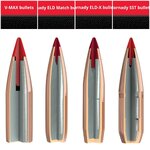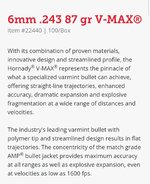Holy Cow,
Agree.
https://rokslide.com/forums/threads/why-match-target-bullets-for-hunting.203770/
Form, your posts in that thread are the best explanation of the issues I have seen and should be published as a book. Or at the least they should be pinned and included as a primer for anyone going through the painful process of questioning the last 100 years of bullet and caliber "best practices."
As for my previous questions about terminal ballistic performance these specific posts are invaluable:
My belief has always been that wind would cause more misses than any other factor, but I don't have the experience to state that definitively. Just too many variables with the wind. Learning to read it, especially over mixed terrain, would take a crapton of experience. Wind is by far the...

rokslide.com
My belief has always been that wind would cause more misses than any other factor, but I don't have the experience to state that definitively. Just too many variables with the wind. Learning to read it, especially over mixed terrain, would take a crapton of experience. Wind is by far the...

rokslide.com
I will dig into Fackler and Roberts to better understand. Curious as to why they even reference Temporary Cavity when it appears that it has no real affect on terminal ballistic performance. If it tears due to high velocity bullet impact doesn't it just become part of the Permanent Cavity anyway?
So, let us rule out hydrostatic shock or temporary cavity as a meaningful contributor towards fast and ethical killing!




